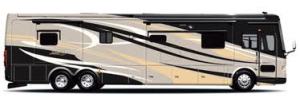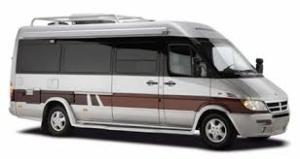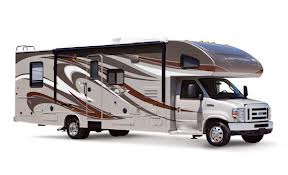Types of RVs
When we started trying to decide which RV would be best for us, I was surprised by all of the choices. I grew up camping. I’ve been around RVs and campers, but as a kid, I never really paid attention to the differences and options out there.
Did you know there are around nine different types of RVs? Nine! And within those nine different categories there are sub-categories. Wowzers, that’s a lot of options!! There are two main types. Towable and Motorized. Do you want to drive your RV or pull/haul your RV? Well, we want to drive ours so we looked at the motorized choices. This narrows the field down, but within the motorized category there are still three groups or classes. A, B, and C.
Class A’s are the largest and built on a specially designed vehicle chassis. You’ll find all of your usual amenities in a Class A. Bedroom, bathroom, kitchen, living area and tons of storage.Oh…and some even have washer/dryers! Both gas and diesel models are readily available. Most of the Class A’s we’ve seen start at around 21 feet and go to about 45 feet. So, there’s a wide range of sizes. Some have slideouts (sections that…well…slideout from the main RV section to widen or lengthen the RV). The cost starts somewhere around $60K and goes up from there. You can spend as much as you want to get all the bells and whistles your little heart desires. Our problem with the Class A is the over the head bed has to be raised and lowered and honestly they never seem completely sturdy. The thought of not being able to leave a location because we can’t get the bed to raise keeps floating through my mind.
Class B’s are the smallest and built on a van chassis. They’re sometimes called Van Campers because they’re about the same size and shape as a van. They drive more like a regular vehicle and come with some amenities. We haven’t really spent time looking at or researching the Class B’s because they’re just way too small to even be considered for a family of five to full time in. Class B’s usually have only one bed, a tiny kitchen, a bathroom, and run between 16 & 20 feet.
Class C’s are considered the in-betweens, but they overlap size wise with the Class A’s quite a bit. Class C’s run between 21 to 38-ish feet, so you can see that the length of a Class C is very comparable to the length of a Class A. Class C’s are usually built on a van chassis like the Class B’s, but offer longer and wider options. Some of the newer Super C’s are built on a freight-liner chassis. What really makes the Class C different is the extended section over the cab where there’s either a bed or extra storage or an entertainment center. It’s this over the cab bed that makes the Class C our choice. The models we’ve been looking at also offer bunk beds which for us is a must. With the bunks and the over the head bed added to the main bedroom we all have a space of our own. Just like in the Class A’s you’ll find all the amenities you could wish for (yep, some even come with washer/dryers). One of the biggest downsides for me about the Class C’s is the lack of storage which draws me to the newer Super C’s which are not only diesel, but have way more storage and a few more bells and whistles. Class C’s also have the slideout options like the Class A’s to widen/lengthen the RV and start at around $40K. You can really spend as much as you want to get all the amenities you need or want.
When you’re going to be living full time in an RV with five people and two big cats, space and storage are kind of the top priorities. Everything else is just…icing on the cake.
See y’all down the road!


